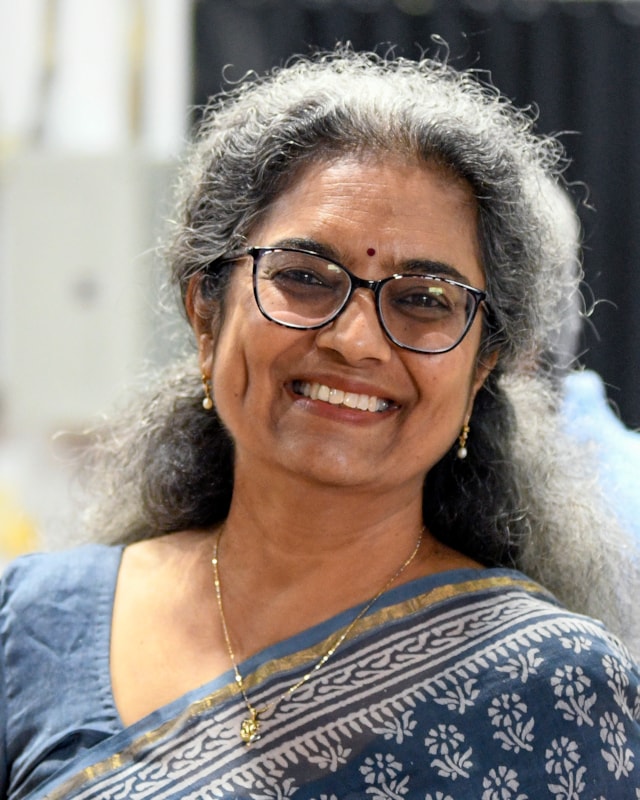
Through tailored, grade-appropriate residencies, students will be introduced to kolams. A kolam is a traditional artwork made on the ground/floor using dots, lines, and repeating patterns. It is a traditional art form practiced in Southern India and can sometimes seem complex and intimidating to those unfamiliar with it. This workshop intends to demystify the beautiful and intricate art form of Kolam and present it in an accessible manner.
Typically, Kolams are drawn on the floor at the entrance of homes using rice flour to welcome good luck in the household. These kolams are done for multiple purposes: a welcome sign to the house, a symbol of auspiciousness and as a form of beauty. In this workshop, students will participate in a hands-on project, exploring the art of kolam using pen and paper. The artist will lead students to through the process of creating a kolam and understanding the different types of Kolams (Sikku, Padi and Pulli). Sikku kolams twist around a grid of dots like a knot and eventually close.
The artist will also guide them to understand the basics as well as create their own original designs. The artist will tailor the workshop to suit the age and interest of the students involved – students of younger grades will have fun learning the basics; while students from higher grades will explore creating more complicated designs. These designs can also be rendered outdoors on the sidewalk using chalk.
Artist Background
SAMPADA KODAGALI AGARWAL is a passionate visual artist, who has spent more than 18 years exploring traditional Indian folk and tribal arts. Much of her work is primarily influenced by India and its rich and diverse culture. Her work has been accepted in a number of exhibitions/shows and she is part of various community outreach and philanthropic causes.
She has embraced the opportunities available to her while living in the United States by interacting with local art and artists. Living outside India has not hindered her from studying various folk-art forms from India, as well. This exposure to art from different continents has helped her understand that art can indeed be a bridge that helps link people from different cultural and geographical backgrounds.
Search Criteria
- Program Type: Workshop/Residency
- Discipline: Multi-Disciplinary, Visual Arts
- Grade Level: Elementary, High, Middle
- Cultural Context: Asian
- Accepts bookings in Johnston County


